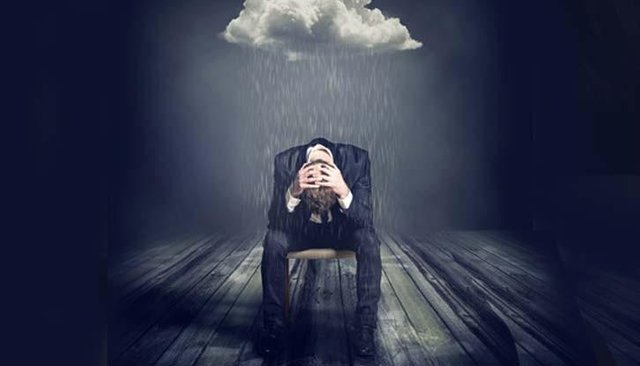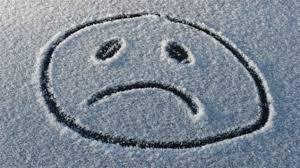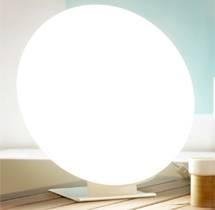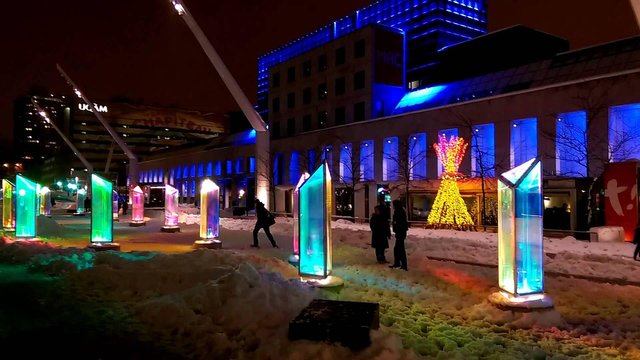The seasonal depression 😪😫😟😢
Seasonal depression, or seasonal affective disorder

Is a mood disorder characterized by depressive symptoms usually occurring during seasonal changes. The depressive symptoms begin at the change of season, when the hours of sunshine decrease, most often the autumn and the winter, to only disappear when the season is finished.
A variant of this disorder may appear in the spring. In this case, the lack of brightness is no longer involved.
The patient is depressed (anxiety, insomnia, lack of appetite) seeing his entourage enjoy the beautiful days that come back while he has a feeling of loneliness remnant. Mood disorders can range from a simple depression in the "winter blues" to a true depressive syndrome.

Signs and symptoms
These seasonal disorders have been described and published for the first time by Dr. Norman E. Rosenthal and his treatment, light therapy.
Some symptoms of winter seasonal depression are similar to those of so-called standard depression. Thus, the decrease of energy, the loss of interest, the isolation and the decrease of the libido can appear. However, so-called "atypical" symptoms characterize this disease. This is an increase in appetite especially for starchy foods and sugars. Hypersomnia is also very present. Depressive episodes must be recurrent every fall for two years. For now, the origin of this seasonal syndrome is unknown. There are, however, several hypotheses, including photoperiod decline, genetics, neurochemical dysregulation, and so on.

Epidemiology
This disorder more often affects women and young individuals. The ratio of women to men tends to equalize with age. In the Nordic countries, winter seasonal depression is a common mood among locals. It was first described in the fifth century in the history of the Goths. Iceland, however, seems to be the exception.
A study conducted with 2,000 individuals reveals a weak development of seasonal depression among both sexes. The authors of the study suggest, however, that certain genetic factors contribute to this low development among Icelanders. Another study of Canadians of Icelandic ancestry also shows poor development in these individuals.

This would be due to a wider and traditional consumption of fish among Icelanders, rather than genetic factors; this same weak development is noted in Japan, where the average consumption of fish is 60 kg per inhabitant per year. The fish are rich in vitamin D and also contain docosahexaenoic acid which prevents the development of neurological disorders. In the United States, the diagnosis of seasonal depression was first made by Norman E. Rosenthal in 1984. Rosenthal wondered what his morale was due to when he moved from South Africa to New York.
He observed a clear improvement in his condition by exposing himself regularly to artificial light. In Alaska, the rate of individuals with seasonal depression is 8.9 to 24.9%. About 20% of Irish people are affected by seasonal depression, according to a study conducted in 2007. The study also shows that women would be more willing than men. 10% of the Dutch population is estimated to be suffering from seasonal depression.

Treatments
Light therapy is a scientifically recognized treatment approved as the treatment of choice for treating seasonal affective disorder. Light therapy is the daily exposure to an artificial light source greater than 2,000 lux to act effectively. The symptoms of SBP improve further with a high light intensity (≥ 2,000 lux) compared to a low intensity (≤ 500 lux) or compared to a placebo. The clinically recommended standard is a 10,000 lux eye exposure lasting 30 minutes at a distance of approximately 50 cm.
The side effects of light therapy are rare and quite mild, especially when compared to antidepressants, but some people may experience headaches, insomnia, dry eye, agitation and sometimes nausea . In individuals with SAD, this treatment is usually used from the onset of symptoms, around September or October, until spring. Some people may also feel the need in the summer during cloudy or consecutive rainy days. It is also recommended to do the treatment in the morning rather than in the evening.
However, the time of day remains a controversial topic as some studies found no differences between these two moments of use, or found that the combination of the two moments of exposure wa greater than a mere morning exposure. An increase in beneficial effects has also been observed by combining light therapy and physical exercises.
Until now, the mechanism of action behind light therapy is not fully understood, but a recent study conducted by Dr. Marc Hébert of the Université Laval Robert-Giffard Research Center in Quebec City suggests a first retinal biological evidence of light therapy. after four weeks of use in a group of patients with TAS compared to a control group. These promising results bring new light to future studies in the field.
I have had this condition for three consecutive years while I was living in Los Angeles, believe it or not. It usually started when we lost our Day Lite Savings Time hour. I had bouts o f depression that lasted 2-3 weeks at a time. The thing is that while you are eposodic, you need to be as active as you can. Taking Anti-Depressants like I do also helps. I haven't had this problem for years but it can always come back. The good thing is that it is highly treatable. Thank God!!!
www.jackkruse.com/getting-started_guide - free, no monetary affiliation. Protocols instead of pills. #dr withfourdegrees #online #quantumbiologydegree #blogformat
I'm opposite as I embrace the changing of every season, the cold crispy fresh air of fall and winter revitalizes me.
I lived in Seattle for a while where this is supposed to be an issue. I felt okay, but it was weird to travel to another state where it was sunny. I felt kind of like a vampire in the daylight lol
Thanks for sharing this high quality content with us !
Appriciate that
You are right dear. I feel once like this symptoms when i was pregnent & that was winter season.I thought it occoured for pregnency but now i feel it was seasonal depression.Thanks dear.
As you mentioned "The depressive symptoms begin at the change of season." This is new information for me, thanks for sharing such post.
Good session for depression .
Good informetion.
well done dear
Very Good Information,
Can you please Checkout my post please...